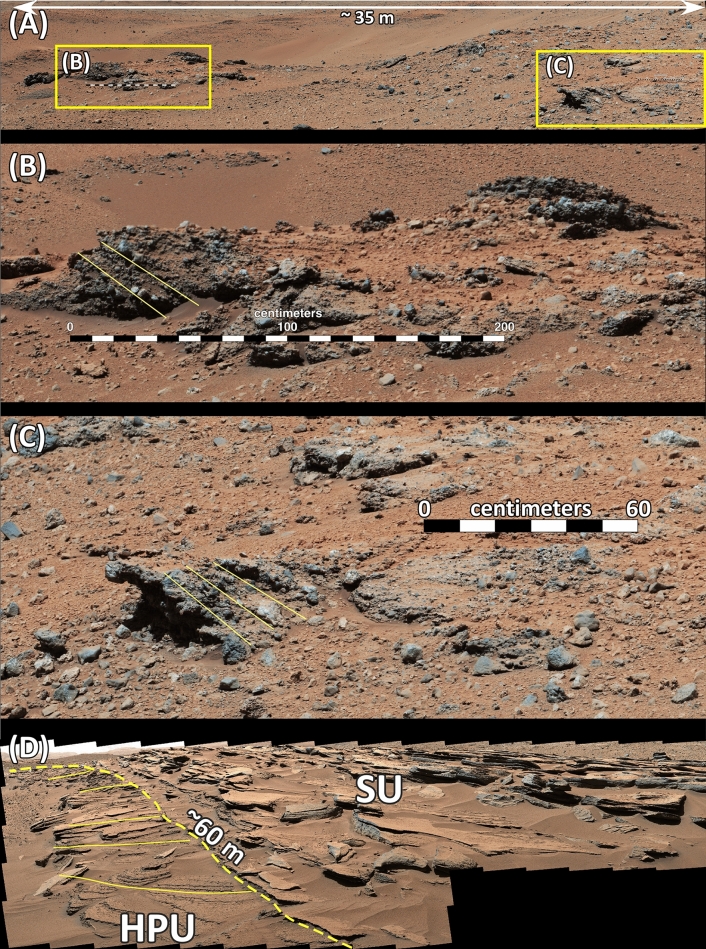Figure 2.
(A) Mastcam image mosaic (Mcam02747) acquired on Sol 646 (looking southeast) shows the exposure of the HPU inside an impact crater. Here the unit is about 8 m thick and consists of cross bedded unsorted conglomerate with clasts as large as 20 cm across. Cross beds indicate flow toward north (to the right of the image). (B) and (C) are enlarged portions of areas in (A) and show cross-bedded conglomerate. Yellow lines are trace of cross beds. (D) Mastcam image mosaic (Mcam02608) acquired on Sol 631 (looking northeast). The location of the image is shown in Fig. 1D. The image shows a 60 m-long cross bed in the HPU that is 2–3 m high. The Cross bedded layer is truncated by layers of the SU with a sharp contact shown by yellow dashed line. It indicates flow direction to northeast. Images used to generate mosaics of this figure are publically available at the Planetary Data System web site at https://pds-imaging.jpl.nasa.gov/ (see supplemental documents). Credit: Malin Space Science Systems and NASA/JPL.

